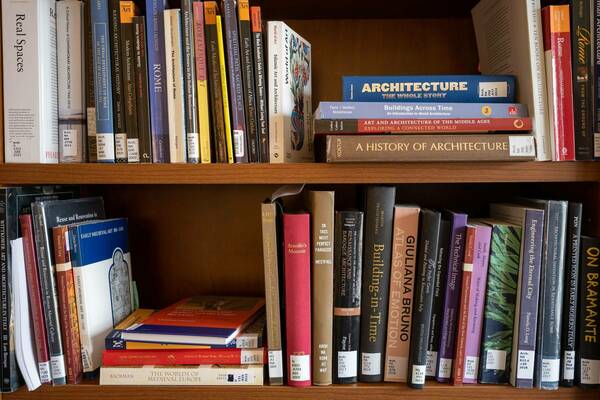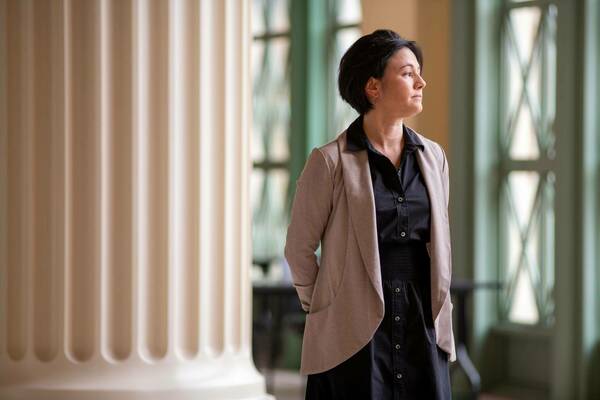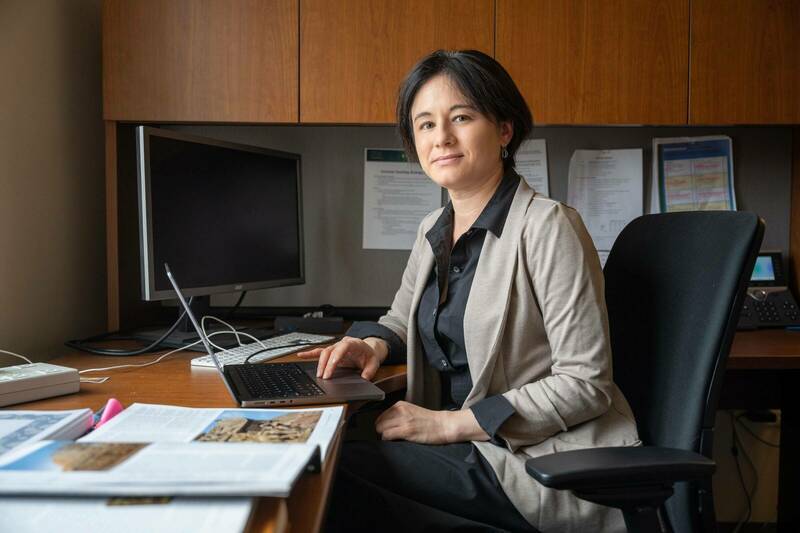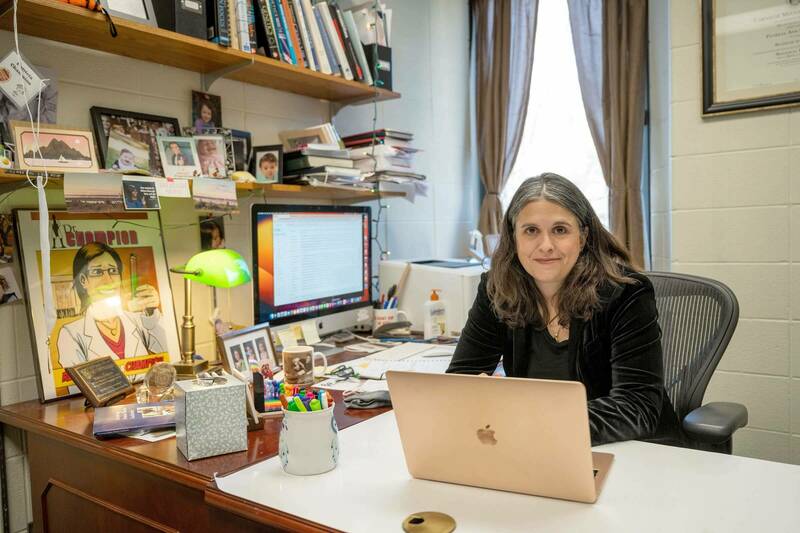“All roads lead to Rome,” the saying goes. And in Yoko Hara’s case, the road to Rome began 6,000 miles away — on a dairy farm in Japan.
Hara’s mother, an American from Illinois, met her father while traveling. The couple raised Hara and their two other children on Kyushu, the warm, lush island that makes up Japan’s rural southern tip. Apart from the English she learned from her mother alongside her native Japanese, Hara had little connection to the Western world.
In high school, though, she began reading about art and architecture and became determined to see the masterpieces of the European Renaissance for herself.
“It felt like a piece of my family history and my identity that I didn’t have proper access to,” she says, “so it was always there hovering in the back of my mind.”
When she was 17 she got her chance. She won an English speaking contest. The prize included a plane ticket, which she promptly cashed in for a flight to Italy.

After her visit, she decided to return to Italy for college. She studied art history at an American university in Rome.
“Looking back, I realize how differently I learned about art and architecture from many other students and many other scholars in this field,” Hara says.
On the one hand, the Western art and architecture she encountered in Rome was foreign to her. It had different assumptions, styles, materials and techniques from the ones she grew up with. And yet, since she was in Italy, all of her classes took place on-site at museums, galleries and architecturally significant buildings. She was learning more directly and in-person from the objects and the buildings she was studying than most Westerners ever will.
“I now know that it’s a great gift to approach Western architecture with an Eastern background. You have to rely more on the agency of the objects and let them speak to you, and you see them with a freshness that others might not,” she says.
Hara offers, as an example, the idea of permanence in Western architecture.
“When I first moved to Italy, it was very strange to realize that there was a preoccupation with permanence. Buildings are made of stone. They are expected to last thousands of years. In Japan, of course, that’s not usually the case. Buildings are made of wood. After 30 years or so, they need to be rebuilt. In Japan, it is the skill of the craftsman that lasts. That is what is passed on. But the material itself is expected to be ephemeral. Those are the sorts of subtle differences that jumped out at me.”
Experiences like these notwithstanding, Hara did not move toward an academic career right away.
“I became an academic, you might say, by a process of elimination,” she says with a laugh.
“Architecture has a kind of spatial agency, and you really have to be present with it and think about how it affects you, how it conditions your thoughts and feelings. You have to engage deeply with what you’re seeing.”
Her first career pursuits were those that allowed her to stay in close contact with art objects. She worked as a curator at a museum and as a conservator restoring and maintaining paintings before returning to academia. She says, though, that she does not see these detours as wasted time.
“All of those experiences influence the kinds of questions I ask in my research — there are threads running through that work that lead to what I do today,” she says.
One of those threads is fieldwork. Like an archaeologist, Hara believes much of her most important work is done when she is on site, patiently interacting with buildings and objects.
“Architecture has a kind of spatial agency, and you really have to be present with it and think about how it affects you, how it conditions your thoughts and feelings,” she says. “You have to engage deeply with what you’re seeing.”
To explain her process, she uses an analogy with a murder mystery.
“You can think of an encounter you have with art or architecture like a crime scene. The effect it has on you comes first, and perhaps you can’t explain it initially. After that you’re like a detective gathering evidence, building a story to figure out what happened.”
While Hara says this approach may not be the most common among her fellow historians of art and architecture, she has found that it holds many important lessons for practitioners — in other words, for architects and architecture students.
“These are exactly the types of questions that people doing design work have to ask. They are the things architects need to become more aware of. They need to really be able to see how their design will affect people, how people will interact with it,” she says.

Fellowships during and after her doctoral studies at the University of Virginia enabled Hara to become fluent in Italian, and the continued opportunity to teach and conduct research on site in Italy was one of the things that led Hara to accept the offer to join Notre Dame’s School of Architecture as an assistant professor in 2022.
Still, even as she prepares to publish her first book on a Renaissance architect and looks forward to organizing her first Renaissance conference at Notre Dame’s Rome Global Gateway, Hara says she receives questions about why her scholarship does not focus on East Asian art and architecture. She has also seen other East Asian scholars of the Renaissance struggle, at times, to gain access to resources and archival material in Europe because they were not taken seriously as scholars.
She takes solace, though, in seeing how the field of Renaissance studies continues to change.
“People from all over the world study the Renaissance,” she says. “It is a vast field, and it is growing more diverse all the time. The question going forward is, ‘How do we benefit from all this diversity?’ Notre Dame’s School of Architecture is part of that conversation. It is a place that values the Renaissance traditions. That is why our students learn by drawing by hand in the studio and spend a full year in Rome. And yet, at the same time that we design within those traditions, we also want to open them up and see them through a global lens.”
So you might say that while all roads still lead to Rome for Hara, she now sees it as a two-way street or an exchange. She has a greater appreciation for what she carries with her when she arrives there.
“For a long time, I didn’t see my background as an asset. I didn’t think my interpretations mattered, or had relevance to what I was studying,” she says. “But I hope it is becoming clear to a new generation of art and architecture historians that your background doesn’t have to determine your scholarly interests. The more we open the field to people with diverse experiences and perspectives, the deeper our understanding will be.”


